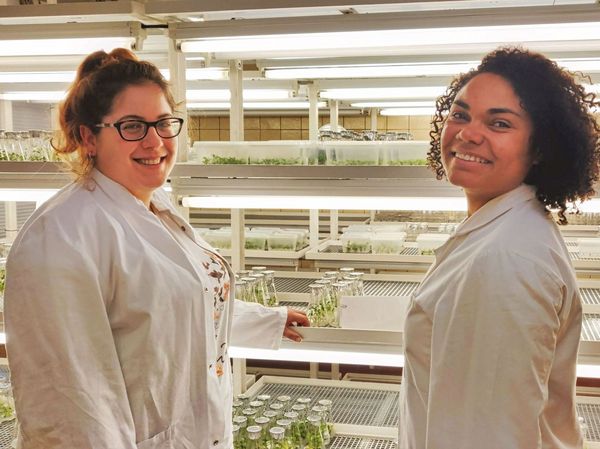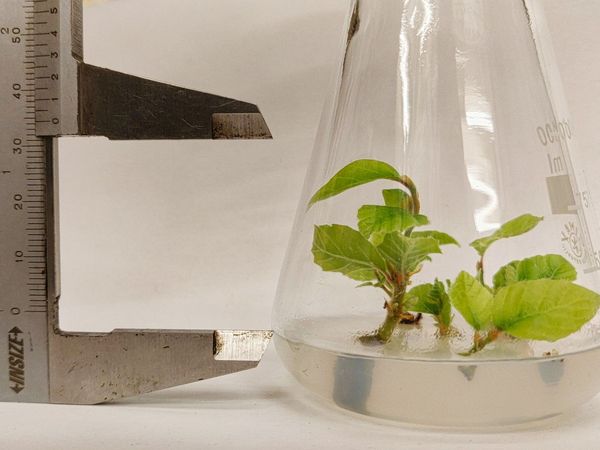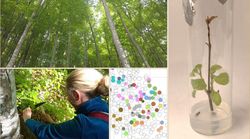Expertise
Bottle babies: How tissue culture helps in beech research
Pascal Eusemann and Ben Bubner | 26.01.2023
Tissue culture can be used to preserve and propagate trees for forestry research. At the Thünen-Institute, scientists are trying to establish the important European beech in tissue culture for future research.
It is hardly surprising that people first think of forests in terms of sunshine, fresh air and the scent of resin and moss. But there is another kind of forest that probably no one thinks of spontaneously: in the laboratories of forestry research institutes. Here, the trees do not stretch out toward the sun, but toward artificial LED lighting. Nor do they take root in humus, but in jelly-like nutrient medium. Above all, they do not rise dozens of meters above the ground, but are content with just a few centimeters in a glass bottle.
At first glance, these plants have little in common with their wild relatives. And yet they are a treasure for research, economic use and even for the protection and preservation of trees. With tissue culture, species threatened with extinction can be artificially preserved, similar to a seed bank, and later replanted in nature. Likewise, plants with particularly valuable characteristics can be preserved, propagated, and planted in the forest as needed. In this way, for example, sycamores with particularly beautiful wood grain are selectively propagated and planted. But tissue culture is also an important tool for scientific research on forest trees because it enables experiments to be carried out with precisely known plants. This enables scientists to gain very precise insights into the response of plants, for example, to pathogens or different environmental conditions.
But although European beech is the most important deciduous tree species in Germany, it is most conspicuous by its absence when walking through a collection of forest trees in tissue culture. This is because it is very difficult to be propagated in the laboratory. As a result, research lacks an important resource to study, for example, the species' defense mechanisms against herbivores and pathogens, as well as its resistance to environmental conditions.
For this reason, the Thünen-Institute of Forest Genetics currently carries out the project BucheTIG in an attempt to identify as large a number of beech trees as possible that are suitable for tissue culture, establish them and make them available to forestry research. This is a departure from the traditional approach of selecting specific trees and trying to establish these individual plants in tissue culture. Instead, an attempt is being made to select from among thousands of plants those that are suitable for tissue culture. The plants used for this purpose come from populations and provenance trials that have been intensively studied at the Thünen-Institute and at partner institutes for a long time. Therefore, for all plants there is a wealth of information on origin, climatic conditions at the place of origin, vigor and vitality as well as resistance to various environmental conditions. This information is used to examine the successfully established plants afterwards for their respective characteristics.
The process therefore simply flips the classic approach around. The hope is to obtain several hundred plants, showing a wide variety of different characteristics. In this way, those plants that are best suited to answering a particular research question can be selected very specifically for further studies. Furthermore, the scientists hope to learn enough about the establishment of beech in tissue culture that it will later be easier to select specific individual plants and transfer them to tissue culture. That way, it might become possible to select economically or ecologically valuable trees which can then be cultivated, propagated and preserved.







